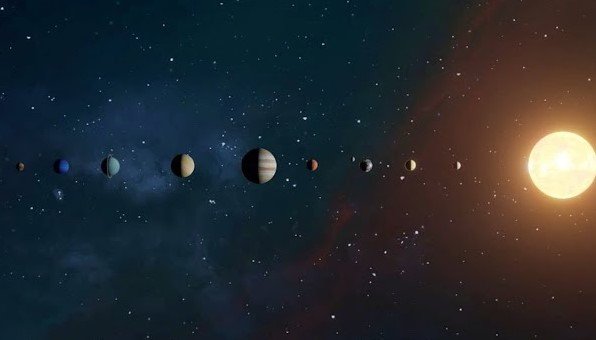Stargazers are in for a rare treat as six planets align in a stunning “planetary parade,” offering a spectacle visible from January 21 to 29, 2025. The alignment features Venus, Mars, Jupiter, Saturn, Uranus, and Neptune, lighting up the night sky in a broad arc. This celestial phenomenon is a once-in-a-lifetime opportunity, particularly in India, where the planets will be visible to the naked eye, making this an event you won’t want to miss.
What Is a Planetary Parade?
A planetary parade occurs when planets in our solar system align in the sky, creating a spectacular sight. While planetary alignments themselves are not incredibly rare, this particular parade, which includes six visible planets, is a special occurrence. It’s not every day that Venus, Mars, Jupiter, Saturn, Uranus, and Neptune line up for such a dazzling display, especially with four of them visible to the naked eye.
The best part? You don’t need fancy equipment to enjoy this celestial display. Venus, Mars, Jupiter, and Saturn will be visible without a telescope, offering stargazers an opportunity to catch a glimpse of these massive planets in all their glory. Uranus and Neptune, however, will require a telescope or binoculars to see clearly.

When and Where to Catch the Show in India
For those in India eager to witness this rare event, timing and location are key. The ideal viewing time is about 45 minutes after sunset, which ensures the planets will be clearly visible in the sky. To get the best view, it’s crucial to find spots with minimal light pollution. This means cities with clear, dark skies will offer the best experience.
Some of the best locations for viewing the planetary parade include:
- Nandi Hills, Bengaluru – An excellent spot with a clear, wide view of the sky.
- Chikkamagaluru, Karnataka – Known for its elevated terrain, offering a pristine view of the night sky.
- Goa – Particularly in locations like Panaji, where telescopes will be set up for public viewing. Events will also take place in Margao, Porvorim, Mapusa, and Vasco on select dates.
In Goa, the Association of Friends of Astronomy (AFA) will be setting up telescopes at various public locations. There’s no need for prior registration, and the best times to catch the parade are between 7:00 PM and 8:30 PM. You can also visit the Panaji observatory at Junta House from Monday to Saturday to get a closer look.
What Makes This Planetary Parade Unique?
What sets this planetary parade apart is the number of planets visible to the naked eye. While alignments happen from time to time, seeing six planets in a single stretch of sky is not something you’ll encounter every year. The lineup features:
- Venus: The brightest, shining with a steady white light.
- Mars: Notable for its reddish hue, which has earned it the nickname “the Red Planet.”
- Jupiter and Saturn: These gas giants show off their distinct features, including Jupiter’s cloud bands and Saturn’s famous rings, which are visible with a telescope.
- Uranus and Neptune: These outer planets are more difficult to spot, making the use of binoculars or a telescope necessary for a clearer view.
How to Prepare for the Event
If you’re planning to observe this planetary parade, there are a few things you can do to maximize your experience:
- Find a Dark Spot: To avoid interference from city lights, head to a place far from urban centers.
- Time It Right: Aim for around 45 minutes after sunset for the best visibility of the planets.
- Bring Binoculars or a Telescope: While four of the planets are visible to the naked eye, binoculars or a telescope will enhance the experience, especially for Uranus and Neptune.
More Celestial Events to Look Forward To
For those who can’t get enough of celestial wonders, there’s more to look forward to. In late February 2025, Mercury will briefly join the planetary parade, bringing the total to seven visible planets. This will be an even rarer sight, creating a perfect follow-up for anyone still buzzing from January’s planetary display.
As we head into the new year, the skies have plenty in store for astronomy enthusiasts. Whether you’re in a city or a remote location, there’s no better time to step outside and look up.
